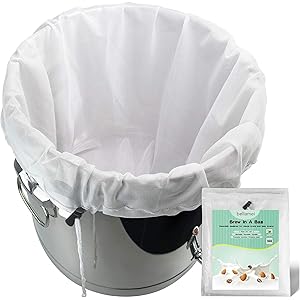Understanding Lactobacillus
Lactobacillus is a genus of bacteria that plays a crucial role in maintaining gut health. These beneficial microorganisms are part of the natural flora of the human gut and are known for their ability to ferment lactose, producing lactic acid. This process not only aids in digestion but also helps to create an acidic environment that inhibits the growth of harmful bacteria. Increasing the levels of Lactobacillus in the gut can lead to improved digestive health and overall well-being.
Benefits of Increasing Lactobacillus in the Gut
Enhancing the population of Lactobacillus in the gut can provide numerous health benefits. These include improved digestion, enhanced immune function, and a reduction in gastrointestinal issues such as bloating and diarrhea. Furthermore, Lactobacillus has been linked to mental health benefits, as a healthy gut microbiome can influence mood and cognitive function. By increasing Lactobacillus levels, individuals may experience a more balanced gut environment and better overall health.
Dietary Sources of Lactobacillus
To increase Lactobacillus in the gut, incorporating dietary sources rich in these beneficial bacteria is essential. Fermented foods such as yogurt, kefir, sauerkraut, and kimchi are excellent sources of Lactobacillus. These foods not only provide live cultures but also contain prebiotics that nourish the bacteria, promoting their growth and activity in the gut. Regular consumption of these foods can significantly contribute to a healthier gut microbiome.
Probiotics and Lactobacillus Supplements
Probiotic supplements are another effective way to increase Lactobacillus in the gut. These supplements contain concentrated doses of beneficial bacteria, including various strains of Lactobacillus. When choosing a probiotic, it is important to select a product that specifies the strains included and their viability. Regular intake of these supplements can help restore and maintain a healthy balance of gut bacteria, particularly after antibiotic use or during periods of digestive distress.
The Role of Prebiotics in Supporting Lactobacillus
Prebiotics are non-digestible fibers that serve as food for beneficial gut bacteria, including Lactobacillus. Foods high in prebiotics, such as garlic, onions, bananas, and asparagus, can help support the growth of Lactobacillus in the gut. By incorporating prebiotic-rich foods into the diet, individuals can create an optimal environment for Lactobacillus to thrive, enhancing their gut health and overall wellness.
Get more content like this!
Sign up to receive updates and new terms first hand.
Fermentation Process and Lactobacillus
The fermentation process is vital for increasing Lactobacillus in the gut. During fermentation, Lactobacillus converts sugars into lactic acid, which helps preserve food and enhances its nutritional profile. This process not only increases the availability of nutrients but also introduces live bacteria into the digestive system. Consuming fermented foods regularly can significantly boost Lactobacillus levels and promote a healthy gut microbiome.
Impact of Antibiotics on Lactobacillus Levels
Antibiotics can have a detrimental effect on the levels of Lactobacillus in the gut. While these medications are effective in eliminating harmful bacteria, they can also disrupt the balance of beneficial bacteria, leading to a decrease in Lactobacillus populations. To counteract this effect, it is advisable to consume probiotics and fermented foods during and after antibiotic treatment to help restore gut health and increase Lactobacillus levels.
Signs of Low Lactobacillus Levels
Recognizing the signs of low Lactobacillus levels in the gut is essential for maintaining digestive health. Symptoms may include bloating, gas, diarrhea, and an overall feeling of discomfort. Additionally, a weakened immune system and increased susceptibility to infections can indicate an imbalance in gut bacteria. If these symptoms persist, it may be beneficial to consult a healthcare professional and consider strategies to increase Lactobacillus in the gut.
Long-Term Strategies for Maintaining Lactobacillus Levels
To ensure long-term maintenance of Lactobacillus levels in the gut, a balanced diet rich in probiotics and prebiotics is crucial. Regular consumption of fermented foods, along with a variety of fruits, vegetables, and whole grains, can support a healthy gut microbiome. Additionally, minimizing stress and maintaining a healthy lifestyle through regular exercise and adequate sleep can further enhance gut health and promote the growth of Lactobacillus.
Consulting Healthcare Professionals
If you are considering ways to increase Lactobacillus in the gut, consulting a healthcare professional is advisable. They can provide personalized recommendations based on individual health needs and conditions. Whether through dietary changes, probiotic supplementation, or lifestyle adjustments, a healthcare provider can help create a tailored plan to enhance gut health and increase Lactobacillus levels effectively.




